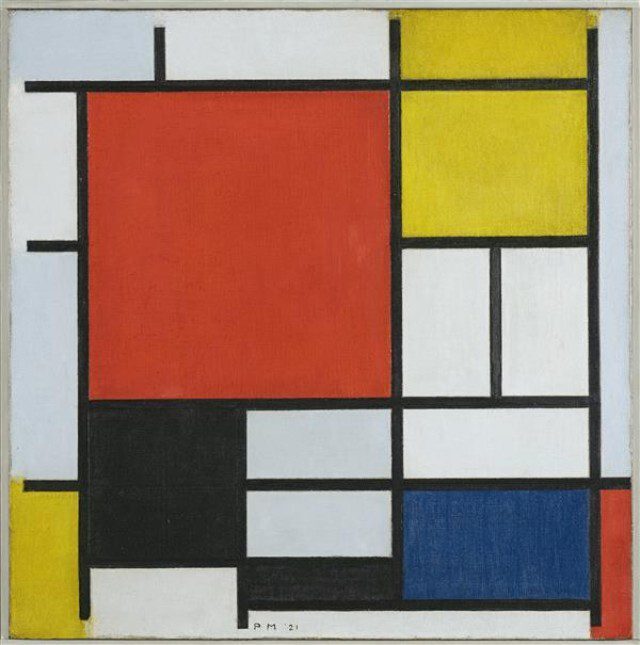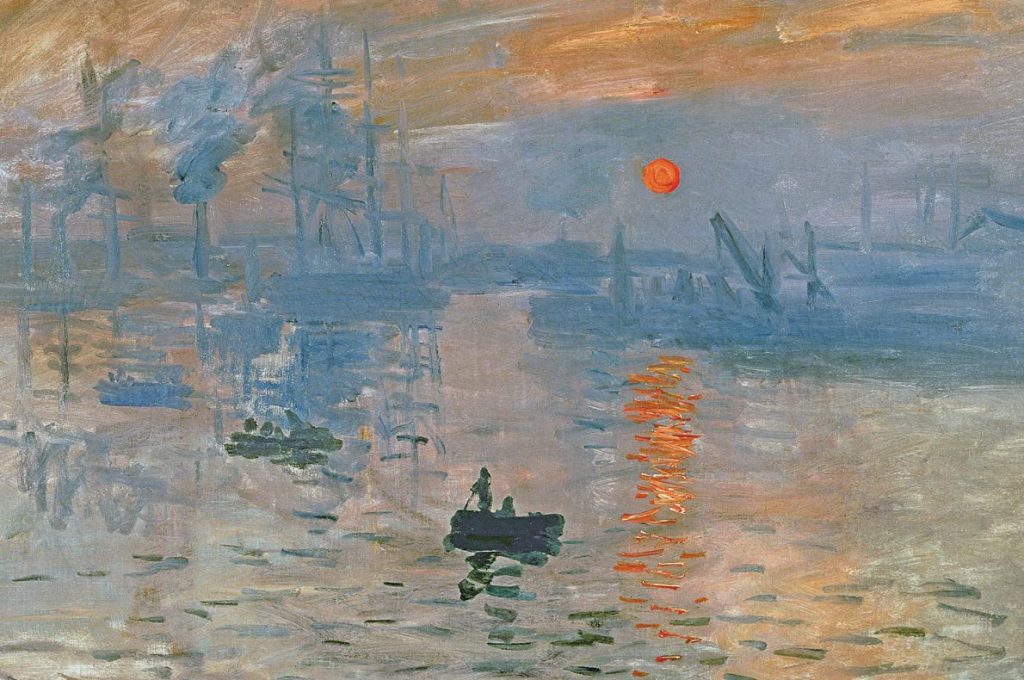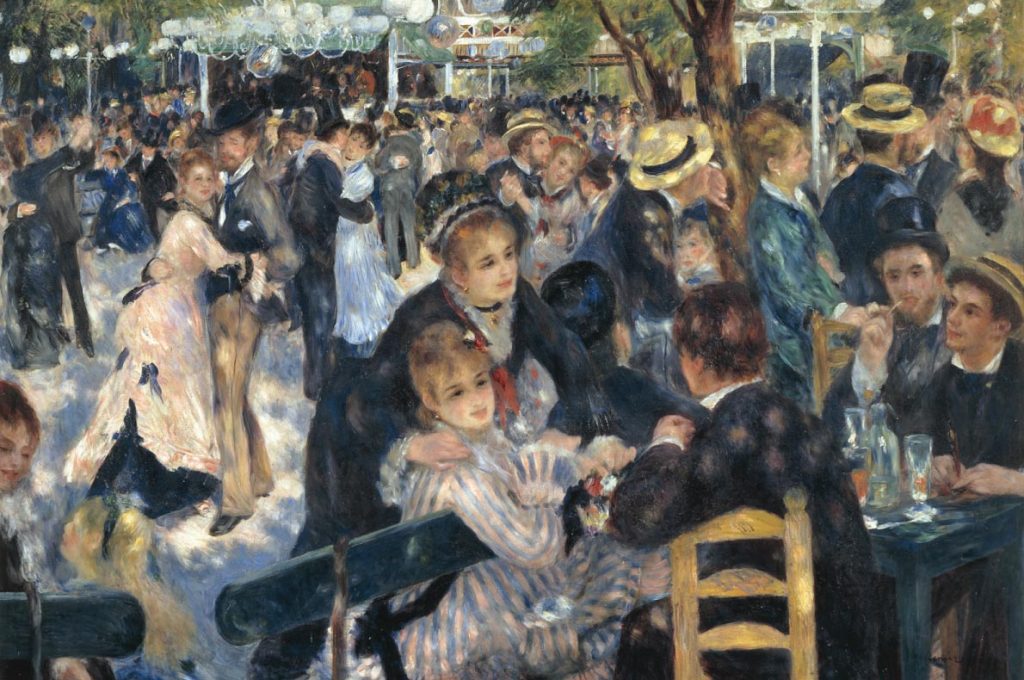There are works that have marked the history of art, and are now a part of our culture. The most important works of art, by some of the greatest artists, can be seen in the best museums in Europe.
Discover the masterpieces of famous artists such as Michelangelo, Vermeer, Leonardo da Vinci, Botticelli, Munch, Mondrian, Picasso, and Van Gogh in our selection of the best destinations in Europe, to see the most famous paintings.
"Wheat Fields with Crows”, Vincent van Gogh
Van Gogh Museum, Amsterdam, Netherlands

This painting is one of Van Gogh's last works, before he committed suicide. Perhaps this is the last landscape he painted. He chose to end his life here. For some people, ravens symbolize death, untraveled roads, and confusion.
In the Van Gogh Museum in Amsterdam, the Netherlands, houses the largest Van Gogh collection in the world, which includes 200 paintings, 400 drawings and 700 letters of the artist. It also features notable works by Van Gogh's contemporaries from the Impressionist and Post-Impressionist movements. The museum exhibits sculptures by Auguste Rodin, Paul Gauguin, Edouard Manet, Claude Monet and Henri de Toulouse-Lautrec.
"Composition with a large red surface, yellow, black, gray and blue" – Piet Mondrian
Gemeentemuseeum, The Hague, The Netherlands

Piet Mondrian is certainly one of the most important Dutch artists. He is associated with Cubism, Expressionism, and Impressionism, but he really marked the history of art with his unique creativity in the field of abstract art.
Mondrian was born in the beautiful city of Amersfoort (Netherlands), and then went to Paris, where he met Picasso and Braque. He returned to the Netherlands shortly before the First World War.
He is one of the founders of the "De Stijl" movement, which means "The Style".
With its 160,000 works of art, The Municipal Museum – The Gemeentemuseeum in The Hague, Netherlands, is one of the largest art museums in Europe. It houses an exceptional collection of modern and contemporary art, fashion and decorative arts. It is also the international home of Mondrian, with a collection of 300 works by the famous Dutch artist. This is the only museum where Mondrian's life and his path to abstract art unfold before your eyes. His works are surrounded by works by famous predecessors and contemporaries such as Monet, Picasso and Kandinsky, as well as successors such as Francis Bacon and Louise Bourgeois.
"Guernica" - Pablo Picasso
Queen Sofia Arts Center
Reina Sofia Museum - Madrid, Spain

Picasso is one of the most famous artists, probably because he managed to break the basic codes of traditional art schools. "Guernica" is certainly his masterpiece. This painting is a spontaneous reaction to the events of the end of April 1937 - the bombing of the Spanish city of Guernica. This bloody deed was carried out by the Nazis and Fascists, but it was ordered by the Spanish Nationalists.
Picasso began painting this painting 4 days after the bombing. The picture became famous soon thereafter, and introduced the world to the horrors of the war in Spain, and the Franco regime.
The museum "Reina Sofia” opened its doors in 1990, to showcase contemporary Spanish art and place it in an international context. The museum's collection consists of more than 20,000 works from the end of the 19th century to the present day, five percent of which are exhibited in the museum. The museum has works by artists such as Pablo Picasso, Joan Miró, Salvador Dali, Georges Braque, and Francis Bacon.
"The Bride and Groom of the Eiffel Tower", Marc Chagall
Center Pompidou Museum - Paris, France

The painting depicts a large white rooster carrying the artist and his wife, dressed in wedding clothes, to an unspecified location, with a mix of Parisian and Russian buildings and elements. The newlyweds are surrounded by Russian souvenirs, music, Parisian life, and many animals. To the right of the painting we see the couple's native Jewish quarter, which seems to be in danger of being engulfed in flames by a candlestick held by an inverted angel.
After his first trip to Paris from 1911 to 1914, and his participation in the Bolshevik Revolution, Marc Chagall (1887-1985) moved to Paris with his wife, Bella. Seeing the signs of the impending war in 1938-1939, Chagall painted this picture of fragile happiness.
In the collection of Center Pompidou, the largest in Europe, many emblematic works of modern and contemporary art can be found. The museum owns more than 120,000 works, among which you can (re)discover some of the treasures of the Center Pompidou - Wassily Kandinsky, Frida Kahlo, Joan Miró, Henri Matisse, etc.
Impression "Rising Sun" - Monet
Marmottan Museum - Paris, France

The Marmottan Museum in Paris, France, one of the most important paintings in the history of art is preserved. Monet, who was staying with his wife in a hotel in Havre, got up early in the morning to paint this picture of the industrial port of Havre and the rising sun.
Did you know that "Impression, Rising Sun" is the godmother of the entire Impressionism movement? The term was first coined by the journalist Louis LeRoy, with the intention of ridiculing the painting technique, but instead, it was adopted by the artists who claimed to be part of this new school.
Along with collections of works by Morisot and Claude Monet, the Marmottan-Monet museum also has a rich collection of modern art. Impressionists, like their predecessors, occupy an important place - Degas, Pissarro, Renoir, Rodin and Delacroix. Post-impressionism is represented by Gauguin, along with Signac, Lemmen, Maurice Deny, whereas Chagall represents the modernist period.
The Birth of Venus, Botticelli
Uffizi Gallery - Florence, Italy

The most famous painting in the Uffizi Gallery in Florence, Italy is certainly The Birth of Venus. Botticelli himself never saw the woman he painted. By the time he painted the picture, the woman had already died. This beautiful young woman named Simonetta Vespucci died of pneumonia at the age of 23.
Although known as "The Birth of Venus", the composition actually depicts the goddess of love and beauty arriving on land, on the island of Cyprus, born from the foam of the sea and carried there by the winds Zephyr and Aura. The goddess is standing on a giant conch shell, as pure and perfect as a pearl. She is greeted by a young woman holding a cloak covered with flowers. Even the roses brought by the wind are reminiscent of spring. The theme of the painting, which praises Venus as a symbol of love and beauty, was probably suggested by the poet Agnolo Poliziano.
It is very likely that the work was commissioned by a member of the Medici family, although there is no mention of the painting in the surviving records, before 1550.
The Uffizi Gallery, in the heart of Florence, is one of the oldest museums in the world, exhibiting works by Michelangelo and Leonardo da Vinci. Art lovers can enjoy not only Botticelli's "The Birth of Venus", but also canvases and sculptures by Giotto, Leonardo da Vinci, Titian, Raphael, Michelangelo, and other famous artists.
"Mona Lisa", Leonardo da Vinci
Louvre Museum - Paris, France

Leonardo da Vinci's real Gioconda can be seen in the Louvre in Paris.
This painting is certainly the most famous in the world, and one of the few officially attributed to the famous inventor Leonardo da Vinci.
Once a fortified palace where the kings of France lived, the museum "Louvre" in Paris, France, is the most famous museum in the world, known for some of the world's most valuable works of art, including "Venus Miloska" and "Mona Lisa".
The Louvre is the most visited museum in the world, and a historical landmark in Paris. It houses some of the most famous works of art. On an area of 72,735 sq m (782,910 sq ft), approximately 38,000 objects from prehistory to the 21st century are on display. Attendance in 2022 was 7.8 million visitors.
"The scream", Edvard Munch
"Munch Museum" – Oslo, Norway

"The Scream" is the most famous masterpiece of the Norwegian artist, Edvard Munch. The painting obsessed him so much, that he painted three different versions of the painting over a period of 20 years.
Have you ever wondered what this painting is? It expresses the modern man, facing an existential crisis, and afraid of his life. Look closely at the picture, the Oslo fjords can be seen in the background. The painting can be seen in the Munch Museum, in Oslo, Norway.
The museum's collection consists of nearly 28,000 works of art spread across four collections Most of them, 26,724 in particular, are works by Munch, which consist of nearly 1,200 paintings, 7,050 drawings and sketches, 18,322 graphics with 842 different motifs, and 14 sculptures.
In addition, the museum owns Munch's original photographs, plaques, lithographs, thousands of manuscripts and letters, as well as 9,830 personal items.
The Creation of Adam, Michelangelo
Sistine Chapel, Vatican Museums – The Vatican

The "Creation of Adam" can be seen in one of the smallest countries in Europe - The Vatican. This painting by Michelangelo is the most famous of a series of paintings in the vault of the Sistine Chapel.
The Vatican Museums extend over an area of nearly nine miles. The collection of the Roman Catholic Church in The Vatican is one of the largest, and most stunning, in the world. Visited by four million people a year, the Vatican Museums showcase the art of Leonardo da Vinci, Raphael, and of course, Michelangelo, featured on the ceiling of the Sistine Chapel.
The museums display works from the vast collection amassed by the Catholic Church, and the papacy, over the centuries, including some of the most famous Roman sculptures and the most important masterpieces of Renaissance art, in the world. The museums own about 70,000 works, about 20,000 of which, are on display.
"The Kiss", Gustav Klimt
Belvedere Museum - Vienna, Austria

The famous painting by Gustav Klimt is on display in the museum Belvedere in Vienna, Austria. The museum was founded by Klimt himself and other artists of his time.
Inspired by Japanese engravings, Klimt created a unique painting. Also inspired by Art Nouveau, this painting represents an embracing couple, isolated from the outside world, who seem to live only for love.
Love here is almost like a religion - sweet and comforting, uniting two beings who love each other.
More than half of the collection of Belvedere is available for viewing online. Art lovers can explore the museum's collections from the comfort of their own home, and walk through 900 years of art history, enjoying works of art from the Middle Ages, to the present day.
"The Girl with the Pearl Earring", Johannes Vermeer
Mauritshuis Museum - The Hague, Netherlands

This small painting is famous all over the world because its composition somewhat resembles Leonardo da Vinci's famous Mona Lisa.
The Girl with the Pearl Earring is Vermeer's most famous painting. Johannes Vermeer is a master of light. This is evident in the softness of the girl's face and the glints of light on his moist lips. And, of course, from the shining pearl.
The Mauritshuis museum displays more than 250 paintings. The collection of paintings provides historical context to many of the processes taking place in society today. Knowing the colonial history will make it easier to understand not only the contemporary Black Lives Matter movement, but also Dutch society, and the diverse population structure. Count Johann Mauritz, who played a prominent role in the transatlantic slave trade, is the creator of the museum.
"The Menins", Velazquez
El Prado Museum - Madrid, Spain

Velázquez was a 17th century Spanish painter. "Las Meninas" is certainly his most famous painting. This painting could be considered is a little strange and disturbing, so one may wonder - why does it hold such a prominent position in art history? Look at the painting carefully. What is the relationship between reality, and illusion? Look again. Velazquez painted himself. He is not facing the scene in the room, and he is not watching what is happening there. Rather, he is looking straight at us! Do you see the royal couple in the picture?
"Menini" hides many more surprises. This is one of the most commented paintings in the Prado Museum.
The museum has one of the largest and most impressive collections in the world, unsurprisingly having the richest collection of works by Spanish artists such as Francisco Goya, Hieronymus Bosch, El Greco, Rubens, Titian and Diego Velázquez, the highlights in the museum collection. Insight and a sense of beauty are the reason for bringing to Spain a wonderful collection of Italian masters. Today, the museum's collection of Italian art is one of the largest outside Italy.
Many specialists believe that the museum houses one of the best collections of European art in the world, dating from the 12th century, to the beginning of the 20th century. The museum's collection is based on the former Spanish royal collection, and is the only such rich collections of Spanish art. The collection currently consists of approximately 8,200 drawings, 7,600 paintings, 4,800 engravings, 1,000 sculptures, as well as many other works of art, and historical documents.
"Ball at the Moulin de la Galette", Auguste Renoir
Orsay Museum - Paris, France

Like Monet, Renoir belongs to the school of impressionist artists. You can see this painting in the Orsay Museum (or Musée d'Orsay, in French) in Paris, France. It depicts a typical Sunday afternoon in Paris, on the hill of Montmartre.
The Orsay Museum is a former train station, which was built for the 1900 World's Fair. It has a dramatic glass roof. Specializing in exhibiting works of art from the 19th and 20th centuries, the museum presents a remarkable collection of Impressionism, including famous works by Monet, Manet, Renoir, Van Gogh, and Degas.
The Last Supper, Leonardo da Vinci
Monastery "Santa Maria delle Grazie" – Milan, Italy

The picture represents the last supper of Jesus Christ with his apostles. Made for the monastery "Santa Maria delle Grazie" in Milan, Italy, where it is located in the refectory of the monastery. It was traditional in all monasteries to have an image of the last supper of Jesus. Christ is depicted in the center of the picture, and the apostles are placed around him in a perfect composition.
It took Leonardo da Vinci 3 years to paint what is now considered to be one of the most significant works of art in Europe.
Follow us for more information: BG Crafts Gallery

